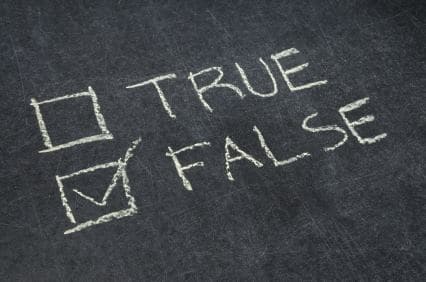What have you heard about the Scientific Research & Experimental Development (or SR&ED) program? Have you confirmed that it is accurate and true?
We wanted to clarify 8 myths that we’ve heard and reveal the truth about Canada’s R&D tax credit program for those of you who have yet to claim. Here are the 8 most common myths or perceptions about SR&ED that we’d like to address:
Myth #1: “SR&ED is a grant for R&D.”
The SR&ED program is actually not a grant or a voucher. It is a tax credit (either refundable or nonrefundable, depending on the size of the company or legal entity type) that you must apply for when you submit your corporate or personal taxes. Basically, SR&ED is a cost recovery program. You can apply for the credit after you’ve paid for your R&D expenses.
Myth #2: “SR&ED is only applicable for large companies.”
The SR&ED program is applicable for both small and large companies as well as partnerships and sole proprietorships. This is a great feature of the program, as it includes startups in the pre-revenue stage all the way up to large commercial organizations. It is tied to expenses and not revenue, so as long as you are spending, you can claim.
Company size matters when it comes to calculating your return rate. If your net income (earnings after tax) are below $500,000, then your tax credit is refundable. This means that the government will cut you a cheque if you’ve paid all your taxes!
Myth #3: “SR&ED eligible projects must be conducted in research labs.”
There is a common misperception that SR&ED is only applicable for those doing traditional research in a scientific lab setting. Well, we are happy to inform you that the majority of SR&ED applicants do not wear white lab coats.
The CRA shared that approximately 95% of SR&ED claims have been for Experimental Development (ED). This is work that is performed for the purpose of creating new, or improving existing, materials, devices, products, or processes. No white lab coat. Still not sure what this is? Call us for a quick chat and we will clear this up for you.
Myth #4: “Only projects with a successful outcome can be claimed.”
False! Unsuccessful projects can still be claimed.
In fact, the key to a successful SR&ED claim is the ability to demonstrate that there were technical challenges that needed to be overcome. Failure to succeed shows uncertainty and that there are still technical challenges that need to be overcome. As long as there is technical uncertainty and you undergo a systematic process to overcome this uncertainty, the outcome, whether it be success or failure, doesn’t matter.
Myth #5: “This program is only applicable for the hi-tech sector.”
While very popular within the ICT sector, SR&ED is also applicable in other sectors such as manufacturing, oil and gas, agriculture, biotech and more.
Some great examples of SR&ED eligible projects in these industries includes:
[list list_style=”darkGrayDot”]
-
Working to increase manufacturing speed while keeping quality consistent
-
Retrofitting an existing piece of equipment to use for a different function than it was originally intended for
-
Overcoming hardware limitations in order to achieve an aggressive performance target or light footprint
[/list]
Myth #6: “My accountant has to prepare my SR&ED claim.”
While your accountant needs to integrate the SR&ED claim form (T661 Part 1 & 2) as well as the provincial schedule into your corporate tax return, they aren’t required to prepare the claim itself. You have a choice.
In our opinion, technical advisors are best suited to prepare SR&ED claims. Successful claims have an emphasis on the technological uncertainty, achievements and systematic technical process undertaken; Many accounting and business professionals don’t have as much experience and technical know-how to fully comprehend the technical work performed within a SR&ED program context. development. Our advisors have engineering and software development backgrounds and are highly qualified to speak to your technological challenges and achievements.
Myth #7: “I have to document my work with a formal time tracking system.”
If you’re worried about your time tracking system, we’d like to reassure you that there are other ways to methodically estimate the time spent on an R&D project – especially if it is your first time claiming SR&ED.
Many software developers who use agile methods quickly realize that they haven’t tracked as much info as they would have liked. You can still use dated journals, emails, photos of whiteboard strategy sessions, version control and more to document your time and technical challenges.
Moving forward, our advisors can suggest time tracking methods that won’t take up too much of your time and will keep you on track for future claims.
Myth #8: “If my SR&ED claim gets reviewed, my company will be audited.”
This is the most common misperception that holds some companies back from claiming their SR&ED eligible work. If your SR&ED claim is selected for a CRA Review (audit), the CRA only reviews your SR&ED related expenditures and technical content – not the company’s entire financials.
In Conclusion…
If you have a question or want further clarification about the SR&ED program, don’t hesitate to contact us. This is what we do 24/7 (well, almost), so we would be happy to explain the specifics of the tax credit program with you in more detail.









